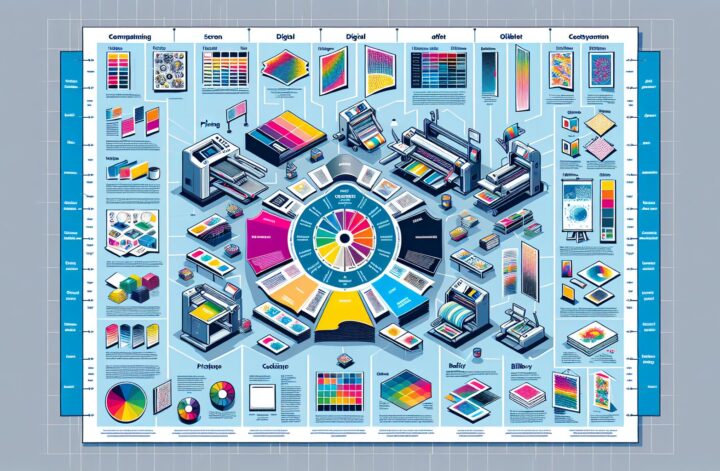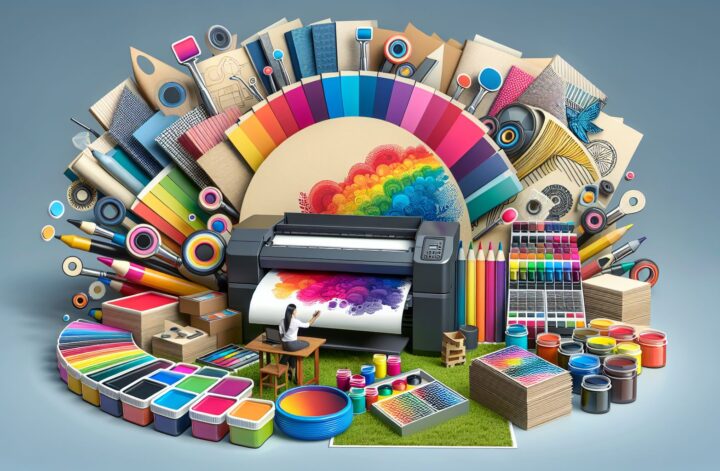Introduction
Printing materials play a crucial role in delivering a clear and impactful message. Whether you’re designing business cards, brochures, flyers, or even creating large-scale posters, selecting the right printing medium for your project is essential. With an array of options available, it can be quite overwhelming to determine which material best suits your needs. In this comprehensive guide, we will explore a variety of printing materials, their characteristics, and the factors to consider when making your selection.
Body
1. Paper-based Materials
Paper remains the most popular choice for printing materials due to its affordability and versatility. Here are some common paper-based options to consider:
a. Bond Paper: Also known as uncoated paper, bond paper offers a clean, classic look. It is an excellent choice for printing documents, reports, or general correspondence. Bond paper is typically available in various weights, with higher weights providing increased durability.
b. Glossy Paper: Glossy paper features a smooth, shiny finish that enhances the vibrancy of colors and images. It is commonly used for printing high-quality photos, brochures, or promotional materials. However, keep in mind that glossy paper may be prone to smudging if not handled carefully.
c. Matte Paper: Unlike glossy paper, matte paper offers a non-reflective, muted finish. This type of paper can lend a sophisticated and elegant look to your printed materials, making it suitable for invitations, business cards, or artistic projects. Matte paper is also less susceptible to fingerprints and smudges.
d. Recycled Paper: If environmental sustainability is a priority, consider using recycled paper. This eco-friendly option helps reduce waste and conserve resources. Recycled paper can have a slightly different appearance and texture compared to traditional paper, so make sure it aligns with your desired aesthetic.
2. Cardstock and Specialty Papers
When sturdier printing materials are required, cardstock and specialty papers step in to deliver durability and unique textures. Let’s explore a few popular options:
a. Cardstock: With its thickness and rigidity, cardstock is often used for printing business cards, postcards, invitations, or any application that requires a more durable material. It can be found in various finishes, such as matte, glossy, or textured, and offers excellent color reproduction.
b. Linen Paper: Linen paper is known for its distinctive textured surface, resembling the look and feel of linen fabric. This paper adds an elegant touch to formal invitations, certificates, or any project that requires a refined appearance. The texture also helps to mask minor imperfections or smudges.
c. Metallic Paper: Metallic paper features a shimmery or pearly finish, which creates a stunning visual effect. This unique medium is ideal for premium invitations, marketing collateral, or any project where you want to make a bold statement. Keep in mind that metallic paper may not be suitable for designs that heavily rely on white or light colors.
d. Vellum Paper: Vellum paper has a translucent appearance, adding a touch of elegance and sophistication to invitations, overlays, or creative designs. It can be used as an accent or overlay to create a layered effect. However, be mindful of the ink or printing technique used, as vellum paper can be delicate and prone to smudging.
3. Large Format Materials
When it comes to larger-scale printing projects such as banners, posters, or signage, special printing materials are required to ensure visibility and durability. Consider the following options:
a. Vinyl: Vinyl is a popular choice for outdoor signage or banners due to its weather-resistant properties. It can withstand exposure to harsh weather conditions, maintaining its vibrant colors and clarity. Vinyl is available in various thicknesses and finishes, including matte or gloss.
b. Fabric: Fabric printing has gained popularity for trade show displays, backdrops, and indoor banners due to its professional and high-end appearance. Fabric materials often offer wrinkle-resistant properties, making them easy to transport and set up. They can be printed single or double-sided, providing versatility for your design.
c. Foam Board: Foam board, also known as foam core, is a lightweight material consisting of a foam center sandwiched between two rigid sheets. It is commonly used for mounting posters, photographs, or artwork due to its excellent adaptability and affordability. However, foam board is not suitable for long-term outdoor use, as it is not weather-resistant.
d. Acrylic: Acrylic is a durable, transparent material commonly used for high-quality signage or displays. It offers a polished and professional appearance, making it ideal for retail settings, corporate environments, or exhibitions. While acrylic can be more costly, it provides longevity and enhances the visibility of your printed message.
Conclusion
Choosing the right printing materials is a crucial step in ensuring the success of your printing projects. By understanding the characteristics and applications of various options, you can make an informed decision that aligns with your vision, budget, and desired outcome. Whether you opt for paper-based materials, cardstock and specialty papers, or large-format mediums, each choice brings its own unique advantages and considerations. So, take the time to explore different materials, experiment with samples, and consult with printing professionals when needed. By doing so, you can confidently create printed materials that leave a lasting impression on your target audience.


